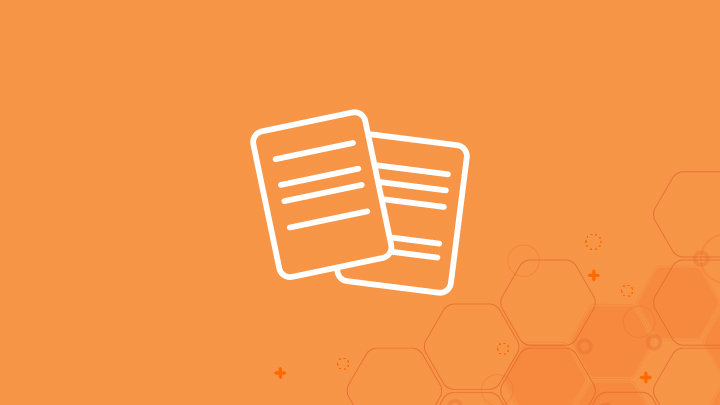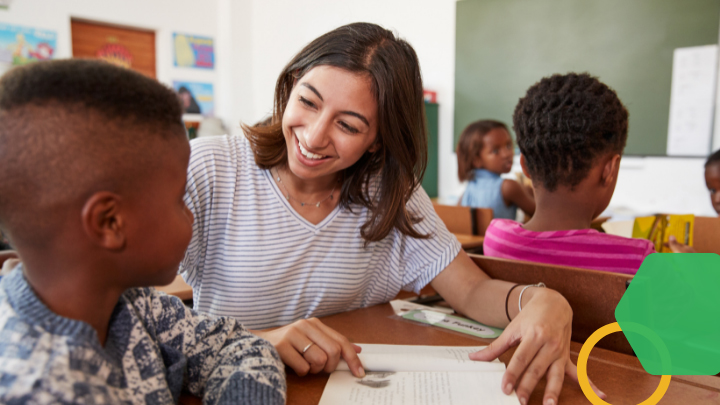Synthesize. Analyze. Sequence. Summarize. Classify.
When I was early in my teaching career, I often thought my students knew exactly what I meant when I asked them to do these things. You can imagine how surprised I was when the students returned my directions with blank stares or a lot of questions. The reality is that humans are not born speaking the “language of school.” Building student comprehension requires us, as educators to explicitly teach academic language and content simultaneously. Both tasks are exhausting, but important!
With the ever-changing language landscape in the United States, we are increasingly charged with supporting all students with academic language and explicitly supporting students who are learning English as another language. It is vital to student success for us to understand the language level of our students and know how to best support language development through the use of specific strategies and scaffolding of content.
So, how can classroom teachers support language development while teaching rigorous content standards?
In my coaching work, I support kindergarten through high school teachers from Anchorage to New York, and many of these teachers are experimenting with using technology to support their students’ language development. Many of their students are English learners. The teachers share a common goal: identify tech tools that will support students’ oral language development and practice, which in turn supports the development of more concrete literacy skills such as reading and writing. The four domains of language (listening, speaking, reading and writing) are intertwined, so when students gain proficiency in one domain it will support the proficiency of the other domains.
If you want them to HEAR it, you talk. If you want them to LEARN it, they talk.
Spencer KaganTips and Tools:
Flipgrid
This app uses a grid system for video recordings that students can use to collaborate with each other on various projects.
I believe that supporting students to engage in math discourse is a powerful tool to increase students content knowledge and deepen their mathematical thinking. One 5th grade math teacher asks her students open ended questions like: What is a fraction? Use real world examples; and How do you compare two fractions? at the end of a lesson or unit to gauge their understanding with the topic or skill. She collects the video recordings as data on how students solve a problem and how well they can verbalize their thinking. This oral language practice supports their processing and deep understanding, which will lead to stronger written explanations of how they solve math problems. Another language support she utilizes is sentence starters or sentence frames to increase the rigor of the language they use orally and also to increase the level of their written tasks.
I work with Lauren Thurber, a 5th and 6th grade math teacher at Hebrew Academy of Montreal in Canada. Recently, Lauren reflected on how Flipgrid supported her students in math:
“With a classroom of 30 students, there were not enough opportunities to have students practice their oral language. Flipgrid offered me a way to clone myself, so I could hear the students’ responses and thinking without having the time to circulate and listen to every student during the lesson. Now, my students can listen to their responses and then go back and edit if they don’t make sense or if they skip an important step. My students took the videos very seriously and acted like it was a performance because their classmates could ‘like’ and respond to the videos. The students even started to say ‘Welcome to my channel!’ without any prompting.”
Seesaw
This program allows students to create digital portfolios utilizing video, pictures, and text to showcase their work.
I feel that supporting students to collaborate and make meaning through authentic tasks is another key approach to supporting language learners. A 4th grade teacher engaged his students in project based learning (PBL), where groups of students had to research types of renewable energy and create a presentation to share with families and community members. Knowing that he had students at a variety of language levels, he had the groups practice and record their presentations on Seesaw and then give each other feedback using a feedback protocol. The performing students were then able to take the feedback, tweak their presentation, and practice before doing it during their classwide PBL celebration.
Vocaroo
This app uses voice-only recording and generates a link to save the recording for teachers and students to use for reflection.
Increasing students’ reading fluency is incredibly important to building strong readers. One first grade teacher has her students read fluency passages at their level and record their reading using Vocaroo. When they are done reading, the students listen to their reading and rate themselves on a student-friendly fluency rubric. Over time, students track their progress on the fluency rubric and the number of words they read correctly. The saved links act as a way to show student fluency growth over time in short sound bites.
Benefits to Using Technology for Language Development
- Decreases the affective filter (the potential anxiety or boredom barriers that can interfere with the language acquisition process in the classroom) of students because recording the language is not speaking in front of a live audience
- Provides multiple experiences with speaking and listening (oral language)
- Allows students to give feedback and watch/listen to something multiple times
- Shows growth over time with recordings
- Allows a teacher to gain deeper knowledge about students’ language levels in a variety of content areas
- Teachers can use technology to develop the 4 domains of language together: speaking, listening, reading and writing








